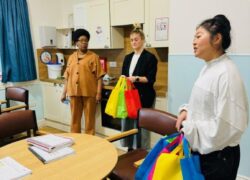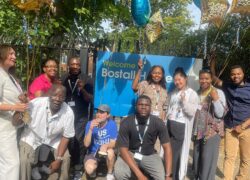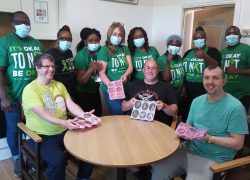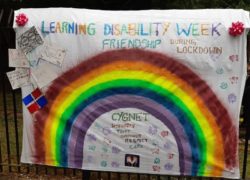
Robert’s* history
Robert is a young man with diagnoses of autism spectrum disorder and mild learning disability. He has spent much of his life in services after his first admission in childhood. Robert was frequently admitted to hospital or transferred to PICU wards in the context of psychotic symptoms with limited insight. He had often presented as agitated, aggressive, paranoid, and neglected his self-care. He disengaged from mental health services when he was in the community and missed appointments with the mental health team.
When Robert came to us
Robert joined us from a large inpatient hospital where he had frequent incidents of violence and aggression and had assaulted a member of staff. Cygnet Bostall House is a small community-facing service with an environment that better suited Robert’s needs.
On admission, Robert continued to have aggressive outbursts when he was experiencing anxiety. He found communicating his emotions and needs difficult and would prefer not to engage in an activity that he wasn’t sure he could complete. Due to some of these difficulties and anxieties, Robert wasn’t utilising community leave or engaging with his activity timetable.
Robert’s care
The team at Cygnet Bostall House identified that a key goal would be to work with Robert to support him to express his emotions and have the tools to better manage them. The speech and language therapist (SLT) introduced Robert to a visual tool that associated emotions with colours. They adapted this in collaboration with him to use visual prompts that would make sense and feel personal to him.
The first step was using the tool to identify emotions in others, then within himself and in different scenarios. The team used a role-play type game to ‘guess the emotion’ which made it a fun experience for Robert. Once his understanding had developed they worked with him to come up with ideas on how he could self-regulate or ask for help.
It took several months for Robert to develop a comprehensive understanding of the tool, but in time he was using it for himself without prompts and using it to open up to staff about how he was feeling.
In his one-to-one SLT sessions, Robert was reassured that there was no such thing as a ‘bad’ emotion. It was explained to him that everyone feels sad, angry or stressed at times. He was reminded that we can all help each other and this further eased his anxiety. The tool was then generalised to his ward activities. Staff encouraged him to utilise the coping mechanisms that helped him feel calm – walking around the garden for example.
As the tool had boosted Robert’s confidence, he was also making progress in sticking to his therapeutic timetable. At times when he would previously have withdrawn from a task, he began to tell staff how he was feeling and they could work together to see if there was a solution.
The occupational therapy team were able to support Robert to utilise his community leave and eventually, unescorted leave. He often heads to the local shops to purchase ingredients which he then takes home to prepare his own meals. Robert also engages in group activities and likes to play pool.
Robert today
Robert now has a good relationship with the team and loves to chat. He can identify his own goals and targets and works with staff to plan the steps needed to achieve them. They are currently working on improving his short-term memory. The team at Cygnet Bostall House are extremely proud of Robert and hope to support him to move on to live more independently in the near future.
*Name has been changed to protect his identity




